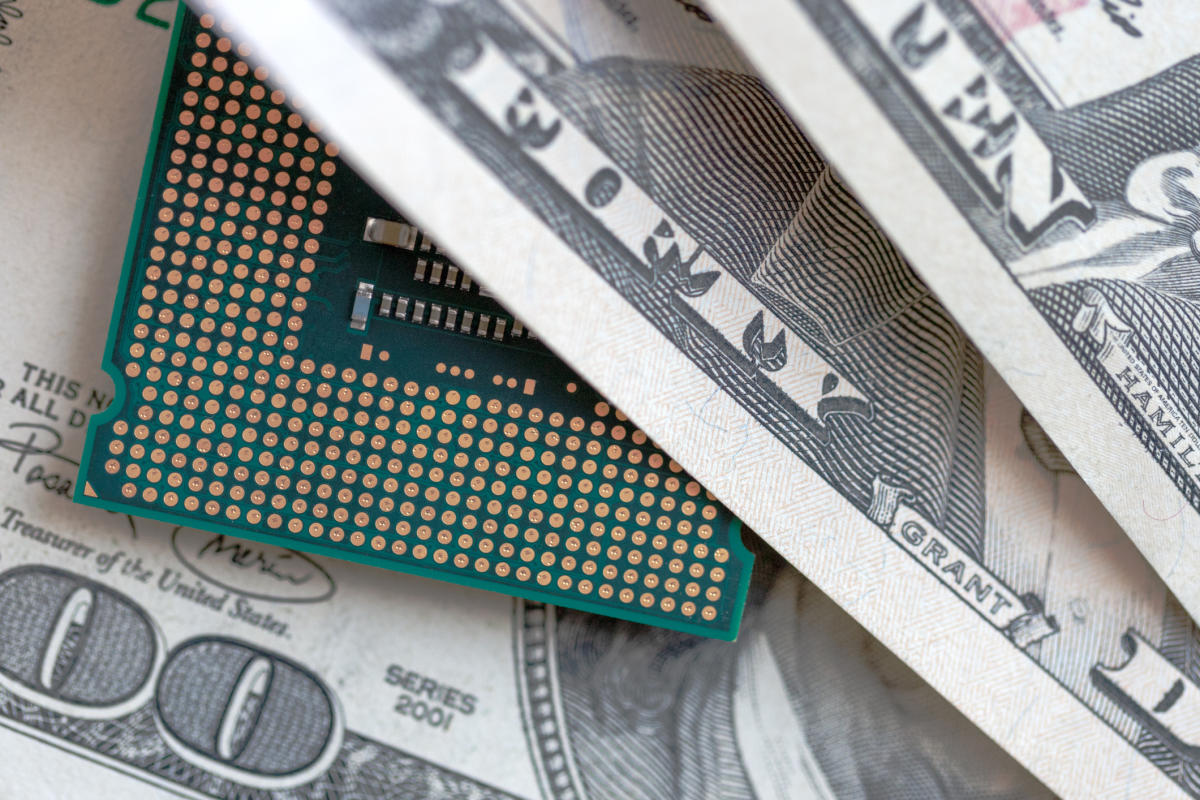Advanced Micro Devices (NASDAQ: AMD) just rose to the occasion in an important contract negotiation. Sony (NYSE: SONY) put AMD’s contract for PlayStation processors up for grabs, and mighty Intel (NASDAQ: INTC) came close to stealing the deal. But AMD walked away with a contract for the upcoming PlayStation 6, securing many millions of custom chip sales and billions of dollars in revenue.
This is good news for AMD investors, but worse tidings for Intel’s shareholders. Let’s break down the financial impact of this bulky Sony contract.
The evolution of PlayStation processors
The first couple of PlayStation (PS) video game consoles ran on very different hardware. The first generation, released way back in 1994, ran on a MIPS processor architecture designed by Sony’s microchip division. Five years later, the PS2 featured a more advanced MIPS chip codenamed the “emotion engine” by co-developers Sony and Toshiba.
The Cell processor found in the PS3 console was a different beast. Sony and Toshiba jumped ship from the MIPS architecture, turning to the time-tested IBM PowerPC platform instead. This chip was designed for the PS3 console and also meant to drive some of the world’s most powerful supercomputers. This ambitious 2006 system was not backward compatible with the MIPS design philosophy, though. That’s why you couldn’t just run PS2 games on the faster PS3 system — you needed a software emulator to make those older games work, and Sony didn’t support all of its PS2 games in this way.
And that’s where AMD comes in. Sony decided to try another fundamental redesign, jumping to a custom version of the popular x86 architecture (PC processors, almost always made by Intel or AMD). As one of the two surviving specialists in high-performance computer graphics in 2013, AMD could deliver a more complete gaming system than the larger chip expert. again, the move to a different design philosophy undermined the PS4’s compatibility with older games, but consumers around the world embraced it anyway.
That console generation was a double whammy for AMD, by the way. The contemporary Microsoft Xbox One also featured a semi-custom AMD processor. And both console giants stuck with their AMD contracts in the PS5 and Xbox Series S generation.
And now AMD has secured the contract for Sony’s next-generation gaming console, presumably to be named the PlayStation 6. The Japanese company has been pretty consistent with that numbering scheme over the last 30 years, after all. And Sony has stuck with AMD solutions for more than a decade already, stretching to about 15 years if you include future sales under the new deal.
The financial impact of PlayStation sales
Sony has shipped 54 million PS5 systems to date. That’s down from 117 million PS4 units, but it’s still a remarkable sales channel and the newer system is still selling millions of units per quarter. It’s also more than the entire run of Xbox One sales, which stopped at 58 million systems, and Xbox System S at 30 million units so far.
By sticking with AMD for another generation, Sony simplified the next system’s compatibility with a massive cache of PS5 and PS4 games. That’s a consumer-friendly strategy, assuming that gamers may want to revisit their library of golden oldies on a more powerful console.
What about AMD’s financial benefits, though? By cross-referencing Sony’s sales records with AMD’s sales to Sony in the same period, it looks like AMD is collecting revenues of roughly $250 per PS5 console.
Intel sat at the final negotiating table, hoping to snag both the processor design and chip manufacturing contracts for the next PlayStation. According to Reuters, that idea fell short as Intel also asked for a higher unit price, with a lifetime contract value in the $30 billion range. Instead, Sony is sticking with AMD’s design and Taiwan Semiconductor Manufacturing (NYSE: TSM) for the manufacturing service.
What AMD’s new contract means for investors
Sony’s processor selection underlines its long-term commitment to AMD’s solutions, which still come with superior graphics processing muscle and — according to the Reuters report — lower unit prices. Securing a business relationship that reportedly accounts for 20% of total sales is a big sigh of relief — and an opportunity to build on that lucrative Sony relationship.
This is also a lost opportunity for Intel. With a Sony PS6 deal in its pocket, Intel would have had a significant selling point for its manufacturing operations and its graphics systems. High-end versions of its Arc graphics processing unit (GPU) are putting up a fight against lower-priced cards from AMD and Nvidia, but Intel has a lot of catching up to do in this market.
Maybe the larger company should have settled for a lower price per processor, if that really was the sticking point.
Should you invest $1,000 in Advanced Micro Devices right now?
Before you buy stock in Advanced Micro Devices, consider this:
The Motley Fool Stock Advisor analyst team just identified what they believe are the 10 best stocks for investors to buy now… and Advanced Micro Devices wasn’t one of them. The 10 stocks that made the cut could produce monster returns in the coming years.
Consider when Nvidia made this list on April 15, 2005… if you invested $1,000 at the time of our recommendation, you’d have $715,640!*
Stock Advisor provides investors with an easy-to-follow blueprint for success, including guidance on building a portfolio, regular updates from analysts, and two new stock picks each month. The Stock Advisor service has more than quadrupled the return of S&P 500 since 2002*.
*Stock Advisor returns as of September 16, 2024
Anders Bylund has positions in Intel, International Business Machines, and Nvidia. The Motley Fool has positions in and recommends Advanced Micro Devices, Microsoft, Nvidia, and Taiwan Semiconductor Manufacturing. The Motley Fool recommends Intel and International Business Machines and recommends the following options: long January 2026 $395 calls on Microsoft, short January 2026 $405 calls on Microsoft, and short November 2024 $24 calls on Intel. The Motley Fool has a disclosure policy.
AMD Investors Just Got Some Bullish News was originally published by The Motley Fool






